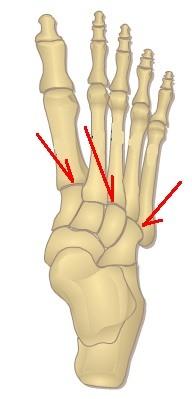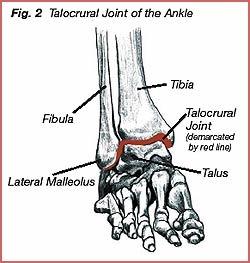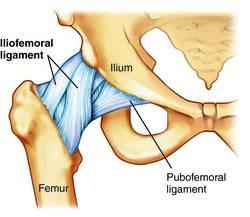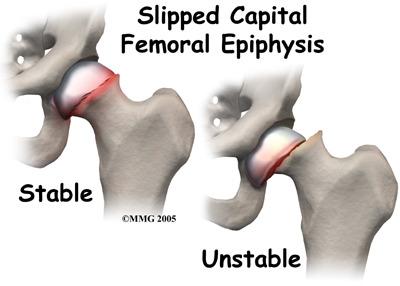A&M Quiz 3 Goniometry
Factors that affect ROM
Gender
age
race
BMI
Occupation
Recreation
Testing
factors
-Tester's experience
=Instruments used
=Time of day
Women tend to have ______ ROM compared to men (adults not children)
Greater
these motions below tend to be _______ in children :
Hip
flexion, abduction, lateral rotation
Dorsiflexion
Elbow
flexion and extension
Greater
the motions below tend to be _______ in children;
Hip
extension
Knee extension
Plantar flexion
limited
Wrist flexion and extension
Hip rotation
Shoulder
rotation
Vertebral mobility
are all common areas of
_________ Rom in adults
decreased
0- ______ degrees of motion is noted for each motion. typically
0-180 degrees
What are the 3 main parts of the goniometer
Body (contains the fulcrum)
Stationary arm
Movement arm
When determining ROM in the testing position the Joint should be in starting position of ___ degrees
0
when Using Goniometer the Fulcrum should be at the ____ ___ _____
axis of motion
when Using the Goniometer, Stationary arm parallel to long axis of _______ _________
proximal segment
the Moving arm of the goniometer should always be parallel to long axis of ______ _______
distal segment
Ideally read goniometer while in place on the patient at ___ _____
eye level
when recording the measurement, Record starting and ending
position
E.g. knee flexion
0° - 120°
If pt is unable to start at 0° then from where started
e.g. knee
flexion ...
15°-120°
If hyperextend then that degree - 0° to end ROM
10° - 0° -120°
12 steps of the testing procedure are?
1. Pt. in testing position
2. Stabilize proximally
3.
Distal segment to 0o; take part through ROM and get end-feel
4.
Visually estimate ROM
5. Return to start position
6. Palpate
bony landmarks
7. Align goniometer
8. Read & record
start position
9. Stabilize proximal segment
10. Move distal
through full ROM
11. Replace and realign goniometer
12. Read
and record ROM
The measurement of a joint angle and the amount of motion
Goniometry
Movement of the shafts of the bones around an axis
Gross
movement of shafts of bones
Occurs around a fixed axis of
motion
Takes place in 1 of the 3 cardinal planes and around
corresponding axis
Osteokinematics
Movement of the joint surfaces with respect to each other
Arthrokinematics
ROM
The arc of motion that occurs at a joint or a series of joints
the feeling experienced by an examiner as a barrier to further motion at the end of PROM.
end-feel
Excessive range of motion
Poor stability and control
Injury
and repetitive stress
Pain?
hypermobility
Beighton Scale
this test for Excessive Hypermobility measures the ROM of the joints
below:
Thumb
5th MCP
joint
Elbow
Knee
Forward flexion
If you want to improve rectus femoris length, what position will you place the hip and knee in?
flexion
If you want to improve hip extension, what position will you place the knee in?
knee extension
If trying to improve length of a muscle that crosses two joints, how should that muscle be positioned?
end range
If trying to improve ROM at a joint where a two joint muscle crosses, how should the joints and be positioned?
end range
When trying to measure ROM at a joint, where should you position the muscle that crosses that joint and another?
midrange
Passive Insufficiency
Muscles can prevent full ROM from occurring at a joint if it is being lengthened over multiple joints
If a _______ ________ ________ is limited, PROM may not pick that up because PROM is measured in a position that does not fully elongate a two-joint muscle
two joint muscle
If a one joint muscle is limited,________ at that joint will be limited
PROM
Muscke Length Testing
Looks individually at a muscle's ability to elongate and is Mostly used for two-joint muscles
Empty End Feel
No real end feel due to pain. No resistance is felt except patient
has muscle splinting or spasm
Acute joint inflammation; bursitis, fracture,
Abnormal Hard End Feel
Occurs sooner or later in the ROM or in a joint that is not typical
to have hard end-feel.
Chondromalcia, osteoarthritis, fracture,
loose joint bodies, heterotrophic ossification
Nomal Hard End Feel
Bone on Bone
(e.g. elbow extension)
Abnormal Firm End Feel
Occurs sooner or later in the ROM or in a joint that is not typical
to have firm end-feel.
Increased muscle tone; tight/shortened
capsule, muscle, ligaments or fascial
Normal Firm End Feel
Muscular (e.g. 90/90)
Capsule (e.g. ext. of MCP)
Ligament
(e.g. forearm supination)
Nerve (e.g. SLR)
Abnormal Soft End Feel
Occurs sooner or later in the ROM or in a joint that is not typical
to have soft end-feel.
Edema; Adipose, Muscle bulk
Normal Soft End Feel
Soft tissue approximation
(e.g. knee , elbow flexion)
Abnormal End Feel
an end feel not typical for the given structures; indicative of a problem at the system level (impairment or pathology)
Normal End Feel
an end feel expected given the anatomical structures
End Feel
Limitations/barriers to ROM at the end of the range
ROM Assessment
Determine active ROM
Determine PROM
Determine End
feel
Determine Muscle length
Assessment
Normal
motion
Hyper or hypo mobility
Capsular pattern
Minimal Detectable Change
the minimum amount of change in a patient's score/measurement that ensures the change isn't the result of measurement error.
Concave on Convex
Roll and glide in the same direction as movement of shaft
Convex on Concave
Roll in same direction as movement of shaft but glide in opposite direction
PROM
the arc of motion attained at a joint by an examiner without assistance from the subject. The subject remains relaxed and plays no active roll in producing movement.
AROM
The arc of motion attained at a joint by a subject during unassisted voluntary joint motion
Hypomobility
this term refers to an decrease in PROM that exceeds normal values for a joint, given the subjects age, gender. The end-feel occurs early in the ROM and may be different in quality from what is expected.
Which axis of motion is oriented vertically when in the anatomical position. This axis runs through the shaft of the bone. Motion on this axis occurs in the transverse plane. Typically called rotational movements. Ex. Rotation of the trunk, oe internal/external rotation of the shoulder.
Vertical
Which axis of rotation allows movement to occur along the sagittal plane, such as flexion or extension of the elbow.
Medial-Lateral
Which axis oriented in a direction, which allows movement to occur along the frontal plane, Such as Abduction or adduction of the hip.
Anterior-Posterior
These movements take place along which plane?
• Internal and
external rotation
• Axial rotation
Transverse
These movements take place along which plane?
• Adduction
•
Abduction
• Lateral flexion
• Ulnar and radial
deviation
• Eversion
• Inversion
Frontal
These movements take place along which plane?
• Flexion
•
Extension
• Dorsiflexion
• Plantar flexion
• Forward
and backward bending
Sagital
pathological conditions involving the entire joint capsule that cause a particular pattern of restriction involving all or most of the passive motions of the joint.
Capsular Pattern
Knee Flexion
130-140
Knee Extnsion
0 degrees
>5 is hyperextension
Hip Flexion
120-140
Hip extension
18-30Hip extension
Hip Abduction
40-55
Hip Adduction
20-25
Hip Internal ROtation
30-45
Hip External Rotaton
32-50
Dorsiflxion (Talocrural joint)
15-20
Plantar Flexion
45-55
Inversion at the Tarsal Joint
30-35
Eversion at the Tarsal Joint
15-20
Inversion/Supination (subtalar inversion)
5 degrees
Eversion/Pronation (subtalar eversion)
5-12 degrees
MTP Joint Flexion
30-45 degrees
MTP JOint Extension
70-80 degrees
What muscle test tests the length of the rectus femoris and a positive test is anything less than 90 degrees of knee flexion?
Ely test
What test tests the tightness of the IT band and anything greater than 10 degrees is a negative test
Ober test
Normal ROM for Hip flexion of the SLR test is what>
68-80 degrees
What are the 4 joints of the shoulder complex
- Glenohumeral Joint
- Sternoclavicular Joint
- Acromioclavicular Joint
- Scapulo-thoracic Joint
What are the rotator coff mucles and where do they insert?
Supraspinatus- greater tubercle of the humerus
Infraspinatus- greater tubercle of the humerus
Teres Minor- greater tubercle of the humerus
Subscapularis- lesser tubercle of thee humerus
what is the main rols of the rotator cuff muscles?
provides dynamic stabilzation to the humeral head
What muscles function as a group to control the active arthrokinematics of the GHJ by stabilizing the head of the humerus within the glenoid fossa during abduction?
The rotator cuff
Describe the degrees of freedom at the Shoulder
flexion-0extensio n
abduction-adduction
internal-external rotation
In order to achieve 90 degrees of ABD there must be 60 degrees of GH motion and ____ degrees of Scapulothoracic motion
30
What should you stabilize when measuring shoulder motion
the scapula
CapsulaR Pattern for the GHJ of limited ROM is>
External rotation>abduction>internal rotation
Frozen shoulder
joint capsule of the GHJ is inflammed adhering to the joint structure, limitations will follow a capsular pattern
what are the 3 stages of frozen shoulder
Freezing, frozen, thawing
What stage of frozen shoulder presents as constant pain ( especially at night), and gradual loss of ROM in 2-9 months
freezing
what stage of frozen shoulder presents with stiffening of joint structures with continues loss of ROM (4-12 months)
frozen
What stage of frozen shoulder presents as restoration of motion and function (5-26 months)
Thawing
Describe the loss of ROM you would expect to find after 5-6 months of adhesive capsulitis? which motions are the most? which are the least?
Flexion limited to: 85-90
abduction limited to 85-90
ER limited to 50
which side is considered the "normal side" when the differences in ROM between R&L in the general population are noted?
dominant or nondominant
Non-Dominant
AS we age, elderly start to lose internal rotation at the shoulders? T or F?
True
Combing hair requires ___ degrees of flexion and ____-____ degrees of ERT at the shoulder
110
60-80
Toileting requires ___-___ degrees extension and ___ degrees IR at the shoulder
35-50
100
Feeding calls for ___-___ degrees of flexion and ___-___ of IR at the shoulder
35-85
20-60
Sternoclavicular joint
- medial clavicle with menubrium and 1st rib cartilage
- strong joint capsule
- reinforced by
- anterior and posterior SC ligaments
- costoclavicular ligaments
- interclavicular ligament
Sternoclavicular Motion
- 3 degrees of freedom
- clavicle on the sternum
- elevation/depression
- protraction/retraction
- anterior/posterior
The sternal end of the clavical is convex/concave in cephalad-caudal direction and convex/concave in the anterior-posterior direction
convex
concave
Why are the capsule and ligaments so strong and thick at the SC joint with little motion?
it is the only attachment to the axial skeleton for the UE
Tibial femoral joint
femoral condyles on the tibia's condyles
reinforced by anterior and piosterior cruciate ligaments and the MCL and LCL
Patellofemoral joint
posterior patella and the femoral patellar surface
joint capsule
large, loose posterior
reinforced by ligaments, tendons, and muscles
Anterior Knee Stabilization
- Quadriceps Tendon
- Patellar Tendon
- Expansion from knee extensors
- ACL & PCL
What ligament is tested with the varus stress test?
LCL
What component of the Knee is tested with the Ober's test?
IT Band
What ligament of the knee is tested with the Valgus Stress Test *with pain?
Medial Collateral Ligament
what muscles share a common insertion at the knee at the Pes Anserine
Semitendonosis, Sartorius, and Gracilis insertion
What muscles posteriorly stabilize the knee?
The knee flexors
Which ligament of the Knee
- resists anterior translation of the tibia relative to a fixed femur (open chain)
- resists posterior translation of the femur relative to a fixed tibia (closed chain)
- resists varus and valgus deformations and excessive horizontal plane rotations
Anterior Cruciate ligament
Meiniscal Tear
MOI usually involves weight bearing during trauma (slip and fall) or external force
sx= joint line tenderness
this type of pain is caused by the patella not moving well in the intercondylar groove
Patellofemoral Pain
Bike
1/2 x BW or 100 lbs of compressive forces on the knee
The _________ ligament does the following:
• Limits
eversion
• A triangular shaped ligament originating off of the
medial malleolus.
• The ligament has 3 sets of fibers;
o
tibionavicular
o tibiocalcaneal
o tibiotalar
Deltoid Ligament
The _________ ligament does the following:
• Limits
inversion
• Consists of 3 different ligaments
o Anterior
talofibular
o Calcaneofibular
o Posterior talofibular
o
The most frequently injured ligament is the anterior talofibular
ligament, typically as a result of excessive inversion and plantar flexion
LCL
name the ligaments of the ankle going clockwise
Anterior talofibular
Calcaneofibular
Posterior talofibular
What are the lateral ligaments of the ankle?
Anterior and posterior talofibular ligaments
Calcaneofibular ligaments
What are the medial ligaments of the ankle
Deltoid Ligaments
Anterior & Posterior Talotibial
Tibionavicular
tibiocalcaneal

the ___________ joint is Formed by the articulations between the convex head of the more proximal phalanx and the concave base of the more distal phalanx

interphalngeal

the __________ joint Formed by the articulation between the convex metatarsal head and the concave base of each corresponding phalanx
metatarsal-phalangeal

the _____________ joint is formed by the articulation between the distal surfaces of the 3 cuneiforms and the cuboid with the base of all 5 metatarsals
Tarsometatarsal joint

The _______ _______ joint Consists of 2 articulations, the talonavicular joint and calcaneocuboid joint

Transverse tarsal

Between the 3 inferior facets of the talus and the matching superior facets of the calcaneus describes which joint?
Subtalar

Trochlea of the talus articulates with the rigid concavity formed by the distal tibia and the fibula describes which joint?
Talocrural joint
Which ligament of the knee,
o Resists posterior translation of the tibia relative to a fixed
femur (open chain)
o Resists anterior translation of the of the
femur relative to a fixed tibia (closed chain)
o Resist extremes
of knee flexion
o Resist valgus or varus deformations and
excessive horizontal plane rotations
Mech of injury
-Hyperflexion
-Dashboard
injuries
-Sever hyperextension
-Large valgus or varus
producing force with a planted foot
-Any of t
PCL
Which ligament of the knee,
Resist valgus deformation of the
knee
Resist excessive knee extension
Injury caused by;
Valgus producing force with foot
planted
-Sever hyperextension
MCL
Which ligament of the knee,
Resist varus deformation of the knee
Resist excessive knee extension
Injury caused by;
Varus producing force with foot
planted
-Sever ehyperextension
LCL
Donning socks: ___- ___ degrees of knee flexion
115-120
Sit to stand: _____ - ______ degrees of knee flexion
90-95
Descending stairs: ____ - ______ degrees of knee flexion
85-100
Ascending stairs: _____ - _____ degrees of knee flexion
85-100
Walking on level surfaces: Requires ____ - ____ degrees of knee flexion
60-65
Obesity is often associated with loss of knee ROM and pain
As much as _____ degree of loss of flexion for each unit of
increase to BMI
1
standing = _____ BW at the knee?
1xBW
Squatting =~ ___ x BW or 1400 lbs of compressive force on the knee
7
Stair Descend ___ x BW 0r 1000 lbs of compressive force on the knee
5
Stair Ascend= ___ x BW or 660lbs
3.3
Bike = ____ x BW or 100 lbs of compressive force on the knee
1/2
this type of knee pain is caused by the patella not moving well in the intercondyler groove
Patellofemoral Pain
MOI usually weight bearing during trauma i.e. slip and fall, or
external force
sx = Joint Line Tenderness
meniscal tear
Which ligament of the knee,
o Resists anterior translation of the tibia relative to a fixed
femur (open chain)
o Resists posterior translation of the femur
relative to a fixed tibia (closed chain)
o Resist valgus and
varus deformations and excessive horizontal plane rotations
Mech of injury
Hyper extension
Large valgus or varus producing force with a planted foot
Either of the above combined with torsion
ACL
function of the meniscus
to absorb compressive forces across the knee caused by muscular contraction and body weight
When the knee is flexed at 120 degrees and the patella is liding distally, where on the patella is the femur making contact
on the posterior superior aspect

- palpable bony projections on the medial and lateral femoral condyles. Respectively these serve as the attachments for the MCL and LCL
medial and lateral epicondyles
the large rounded projections of the distal femur that articulate with the medial and lateral condyles of the tibia
medial and lateral condyles
Which ligament of the knee,
o Resists posterior translation of the tibia relative to a fixed
femur (open chain)
o Resists anterior translation of the of the
femur relative to a fixed tibia (closed chain)
o Resist extremes
of knee flexion
o Resist valgus or varus deformations and
excessive horizontal plane rotations
Mech of injury
-Hyperflexion
-Dashboard
injuries
-Sever hyperextension
-Large valgus or varus
producing force with a planted foot
-Any of the above combined
with torsion
PCL
- the smooth rounded area between the femoral condyles that articulates with the posterior surface of the patella.
• Intercondylar groove
Compared to the 2 non-weight-bearing exercises, the squat exercise produced significantly higher PFJ stress at ____, _____, and ____ of knee flexion.
90°, 75°, and 60°
as you extend the knee, patellar femoral joint compression increase during which type of movement
OKC
greater compression of the patellar femoral joint during knee flexion on decent ( increased flexion= increase pressure) occurs during which type of movement?
CKC
What are the osteokinematic motions of the tibiofemoral (KNEE) joint?
• 2° of freedom;
-flexion/extension
-internal/external rotation
Describe the vascularity of the meniscus
Inner one third = Essentially avascular
Middle third = Poor blood supply
Outer third = Good blood supply
_____________ ______ __________ ____________ are crescent shaped fibro cartilaginous discs located at the top of the medial and lateral condyles of the tibia.
• medial and lateral menisci
-Improve overall congruency of the tibiofemoral joint
-Dissipate
compression and shear forces across the knee
Injury caused by
Extreme valgus or varus producing forces at the
knee
Extreme rotations of the knee especially under large
compression forces
Medial and lateral menisci
-Resist excessive knee extension
Injury caused by severe hyper extension
Posterior Capsule
Which ligament of the knee,
Resist varus deformation of the knee
Resist excessive knee extension
Injury caused by;
Varus producing force with foot
planted
-Sever hyperextension
LCL
Which ligament of the knee,
Resist valgus deformation of the
knee
Resist excessive knee extension
Injury caused by;
Valgus producing force
MCL
Conversely, the 2 non-weight-bearing exercises produced significantly higher PFJ stress at ____, _____, and _____ of knee flexion when compared to the squat exercise
30°, 15°, and 0°
Which ligament of the knee,
o Resists anterior translation of the tibia relative to a fixed
femur (open chain)
o Resists posterior translation of the femur
relative to a fixed tibia (closed chain)
o Resist valgus and
varus deformations and excessive horizontal plane rotations
Mech of injury
Hyper extension
Large valgus or varus producing force with a planted foot
Either of the above combined with torsion
ACL

• While a lateral angle greater than 175° is called genu varum or the term genu ____________ is to say that the shaft of the tibia is positioned (tilts) medially towards midline, making the knees bow apart
Varum

A lateral angle of less than 175° is called excessive genu____________. Or to say that the shaft of the tibia is positioned (tilts) laterally away from midline, making the knees knock together.
Valgum
• During normal patellar femoral joint motion the Patella glides _____________ as knee is extended
Proximally
• During normal patellar femoral joint motion the Patella glides___________ as the knee is flexed
Distally
• Function of the patellar
o Act as a transmitter of quadriceps force across the knee
o
Enhancing the leverage (internal moment arm) of the quad muscle
-protrusion of bone located on the anterior aspect of the proximal tibia, serves as an attachment for the quad muscle.
Tibial tuberosity
• Intercondylar eminence
-dbl pointed projection of bone separating the medial and lateral condyles of the tibia. Serves as an attachment for the ACL and PCL
smooth and shallow for articulation with the condyles of the femur
• Medial and lateral condyles of the tibia-
Intercondylar Notch
- located on the posterior/inferior aspect of the distal femur separating the medial and lateral condyles
Proximal joint surface of the hip is the ?
acetabulum
Distal joint surface of the hip is the _______ ________
femoral head
Axis of motion of the hip joint is the is the ______ _______
femoral head

the hip joint is enclosed anteriorly by __________ and the _________ ligaments
iliofemoral (Y Ligament) & pubofemoral

the hip is Enclosed posteriorly by __________ ligaments
ischiofemoral
capsular pattern of the hip follows what motions?
Restricted:
*Medial/Internal rotation
Limited:
*Flexion
*Abduction
what are the 3 degrees of freedom at the hip?
flexion/extension
add/abduction
int/external rotation
Can occur anywhere in the labrum but __________ / _______ most common tear
anterior/superior
a labral tear can be Accompanied by clicking, slipping
Often due
to repetitive twisting, cutting, and pivoting movements in addition to
repetitive ______ at the hip
flexion
a labral tear can be associated with Pain with Flexion/Adduction and
with axial loading
Often associated with _____ __________
hip impingement
avascular necrosis
Painful weightbearing
Restricted motion typically due to
pain
Due to impaired blood supply from the lateral circumflex
branches off the femoral artery
Often results in need for THR

Slipped Capital Femoral Epiphysis (SCFE)
Lower Extremity held in lateral/external rotation
Limb is
shorter
Pain
Sometimes in knee
Decreased
medial/internal rotation and flexion
antiversion/retroversion
Torsional Rotations of the femoral neck or the acetabulum
Extreme amounts of IR vs. ER
Extreme amounts of ER vs. IR